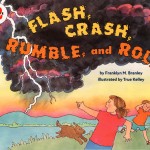
I remember when I built my own brokerage firm with a bunch of people, including Rich Hagen, co-founder of TradeKing. For the time, we had developed a novel way of trading, which needed market makers to understand and facilitate some of our new ways of trading, like the ladder order. We found two great places to make our trades. One of them was Knight Securities. We used them to trade most of our NYSE stocks. The other was Madoff Securities. We used them to trade our OTC or Nasdaq stocks. Both were excellent firms for these purposes. Yes, you heard me correctly. Believe it or not, Madoff had created a legitimate securities firm, as opposed to his illegitimate hedge fund business.
It’s been 10 years since then and Madoff Securities is gone and its founder in jail and just last week, a computer glitch at Knight almost caused the firm to go bankrupt (on.wsj.com/NJdn45) . What are ordinary investors to do? The purpose of a market maker is not to run a hedge fund on the side, not to take bets on Greece a la MF Global, and not to lose $440 million in one day. Market makers are there so that whenever you or I have a buy or sell order, there is a central platform that is so immersed in the market that they can buy or sell from us instantaneously and transfer the security to someone else relatively quickly. There is always a small risk in these activities, but small is the word.
Ivan Lendl said of tennis recently “The speed of the game has changed.” The speed of trading has changed dramatically in 20 years due to the advances in technology (http://on.wsj.com/Rjkblp). We used to have humans in pits having to work fast but fast meant processing information in seconds not milliseconds. High frequency traders (aka HFTs) represent about 73% of market trading (see The Crisis of Crowding by Chincarini). Some of them run complex algorithms to manipulate market prices, but this is still a source of debate. The movement in security prices intraday has become more subject to mini crashes over the last few years, most likely due to the technology driven speed of information and execution. The latest wreck though was initiated by a error in Knight’s software program that led to a feedback effect as other electronic systems traded in reaction to the errors at Knight. Building software to do efficient trading isn’t easy, but that’s their job. How could they screw that up? I remember when we built our online brokerage firm, we spent countless hours thinking about whether any of our algorithms for trading could be gamed…and then we tested the software internally. That’s just was Knight did. According to my friend and trading market expert, Eric Hunsader, Knight released the new version of their software with the test algorithm still attached. The test algorithm went out and instead of making mock trades was making live trades in the market resulting in large positions for the firm, some of which lost them lots of money. For other software companies, a mistake like this would not be so bad, but in the financial markets, this means real trades with real dollars.
So as a trader, what should you have done on the day of the Knightmare? On the day of the glitches, August 1, 2012 Knight’s stock (KCG) stock dropped by 32%, the next day it dropped by another 63%, for a two-day drop of 75% to a share price of $2.58. It dropped so low, that KCG was trading well below book value by about 40%. When I saw this I paused and thought, “Should I buy Knight?” First, Knight relies on short-term financing. Thus, if the crowd runs for the exits, Knight is finished. The break-up value was estimated by analysts at $340 million or $3.79 per share. Thus, in some senses, it looked like a risk worth taking to buy Knight on Friday morning. It opened at around $3.16. Thus, small investors could have bought and made a Friday return of about 28%. But that’s said and done. Should you buy Knight now? The risk is higher now and it all depends if the market regains their confidence in Knight. Over the weekend, Knight had a capital injection from a group of investors of $400 million in exchange for 267 million shares. If one ignores any impacts from the events, like lost of trust, lawsuits, etc, Knight’s diluted value would be $2.48 per share. Whatever you decide to do, I would only put a small part of your portfolio on this trade or completely stay out of this until further notice.
The saddest part of the news is that the efficiency of fast paced computer trading is crashing at regular intervals. It’s all part of the new crash normal, and it’s not clear that the SEC or anyone else knows what to do. Maybe things weren’t so bad when we had tall, strong men elbowing each other in the pits.






